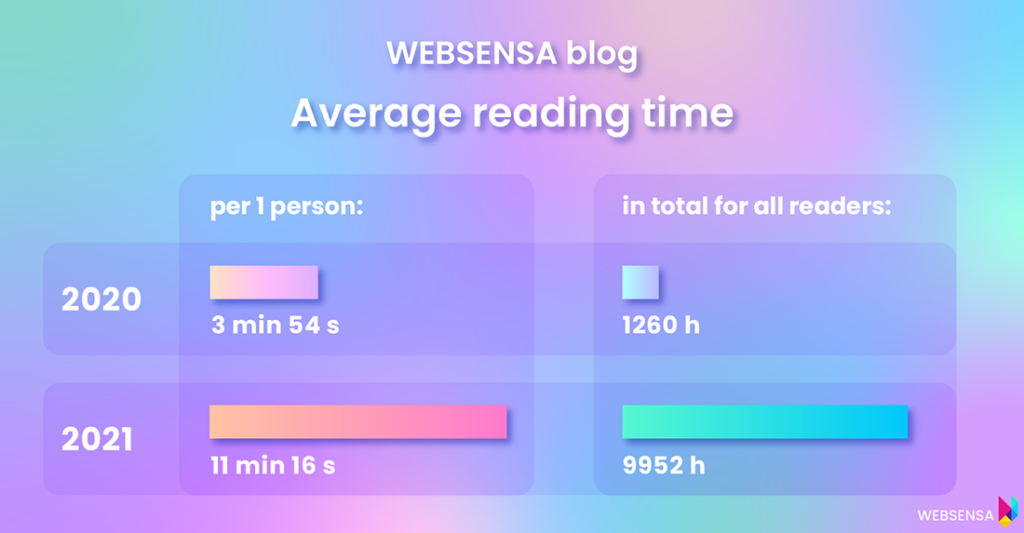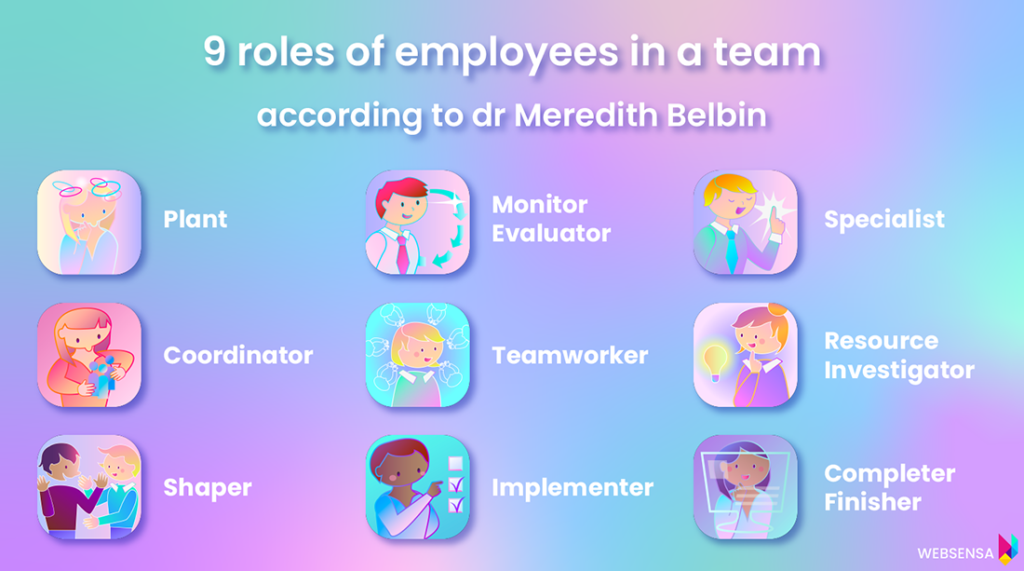Regardless of the time passed, some topics still have unflagging interest on our blog. Several new articles have gained popularity, but the 2020 most popular ones have maintained their strong positions. This article summarises the most popular content on our blog in 2021. Read on!
Our readers are especially keen on issues related to the choice of job, i.e. available programming positions and new career paths. However, we also notice growing curiosity surrounding topics of continuous development of creativity at work and the use of professional potential. Among the more specialised topics, quite popular are those related to programming languages used for solutions based on artificial intelligence and machine learning.
5 articles from 2020 that remained popular in 2021:
1. 10 the Most Creative Jobs in 21st Century
2. Top 5 Programming Languages for Artificial Intelligence
3. Go vs. Python – which one is better for machine learning?
4. Work in IT – what do the job titles of programmers mean?
5. 10 professions that AI can replace. Will a robot take your job?
Since we summarized them last year, there is no sense in repeating ourselves. Just check out this article: Top IT topics of 2020 – which WEBSENSA blog articles were read the most?
What the year 2021 brought
As our audience grew bigger, we also did not slow down. In 2021, we published 34 new articles (you can find a total of 76 on our blog). We recorded as many as 53,000 views on our website, which is a more than twofold increase compared to 2020 (21,000 views).
What’s more, the average reading time for our content was over 11 minutes, and for some articles – even 1 hour. We consider it a great success, and we are glad that the articles we write are helpful for you!

5 new texts that have grown in popularity in 2021:
1. 8 Ways to Become More Creative at Work

The ability to think creatively is a trait needed today, not only in strictly artistic professions. Currently, in many industries and professions, an above-average creativity is mostly valued. And especially in the field of IT where most of tasks can not be replaced by progressive automation. Creative people are currently sought in many workplaces, and this skill is becoming almost a key feature in recruitment processes.
Creativity is a skill that makes it possible to search for new, innovative solutions. Thanks to it, people can activate new thinking patterns and find connections between things that no one has noticed before. As Albert Einstein believed “Imagination is more important than knowledge.”
Creativity is also a trait that can be developed. If you will use the methods of improvement presented by us in this article, after some time thinking creatively can become a habit for you. It is due to the way our brain works. If you want to increase your creativity, check out our article on 8 ways to improve it in the workplace.
2. Software Development Life Cycle – SDLC phases & model

The Software Development Life Cycle is a process used in the IT industry to design high-quality software. It ensures transparency of each phase of the cycle and the project as a whole. Usually, it is divided into 5–8 stages. However, sometimes they are combined, more divided or omitted, depending on the project’s scope.
Steps break down the development process into tasks that can be assigned, completed and measured. Meanwhile, the timelines of the detailed plan allow for the smoothness, analysis, control and improvement of the development process. In our article, we described a seven-step cycle, including:
1. Planning and analysis of requirements
2. Feasibility study
3. Designing (possibly prototyping)
4. Coding
5. Testing
6. Deployment (installation)
7. Maintenance (operation)
We have supplemented the SDLC cycle with its application in popular methods and methodologies of the software development process. Read more in the linked article!
3. Product owner – what are their key competences in a project?

Each development team should have a product owner whose role is to define the entire product development process – from the strategy planning to product release. They set priorities, performance indicators and collect requirements. They also decide what is optimal for the product and when it will be available for release.
Therefore, product owner’s role is not easy, and the competencies necessary to fulfil it are pretty extensive. The key ones include:
- knowledge about the product (both substantive and technical);
- familiarity with business, customers and the market (trends and competition);
- excellent communication skills;
- ability to make independent decisions and take responsibility for them.
Our article describes the tasks and techniques of product owner in detail. If you want to confront whether you meet the requirements and are suitable for this position, click the link in the headline and read the article.
4. Display advertising – types, features and challenges

Digital display advertising is a visual ad format in which images or banners are targeted to a predefined audience. This popular solution is eagerly used in Internet marketing.
The advantage of display advertising is reaching the target group and increasing brand, product or service awareness. However, it is worth knowing both its advantages and disadvantages to use display advertising optimally.
We describe them in our article; we also present popular formats and where and how you can use them. Moreover, there are tips on how you can increase the effectiveness of display ads thanks to advanced solutions – that base on data analysis and machine learning models.
5. 9 types of employees worth having in the company – which one are you?

Are there personality types that best fit your business and have the most significant impact on its culture and success? It turns out there isn’t just one. To create a coherent and effective team, it is worth employing people with different personalities.
It’s also worth keeping in mind that soft skills, such as social predispositions and character traits, are gaining importance. You can also tailor certain personality types to meet the needs of your business.
There are specialised tools for discovering and understanding oneself and others, such as the Myers-Briggs Type Indicator (MBTI) self-assessment questionnaire and Belbin’s theory of 9 team roles, which we focused on in our article. They are:

Knowing the types of people and roles in the group can be used when building a new team, involving another person, increasing the effectiveness of activities, managing a career in accordance with individual characteristics. Check out the article to see a detailed description of those types.
What are we planning in 2022
So far, the content on the Websensa blog has focused on issues that may be of interest to people starting their careers in the IT industry.
From this year on, we are planning more technical articles, which authors or co-authors will be our employees! At WEBSENSA, we have a team of talented specialists in data science, machine learning and other technologies related to artificial intelligence. And we want to share their knowledge with you.
However, you will still find “lighter” topics here as we see that soft skills are still gaining in importance in the labour market in addition to technical knowledge.
So, if you want to be up to date with this content, be sure to subscribe to our newsletter. You will receive a set of the latest articles from WEBSENSA about once a month. You will find the subscription form just after this article. See you on our blog in 2022!
